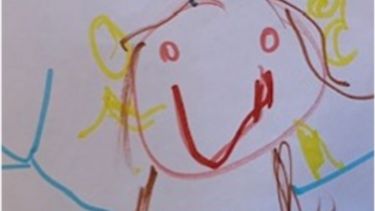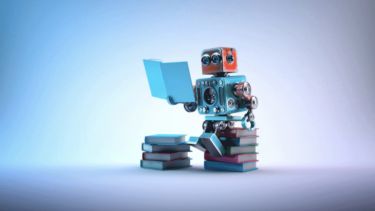On 21st and 22nd February, Kirsty Liddiard, from the School of Education and iHuman, University of Sheffield, collaborated with Georgina Barney from the Attenborough Arts Centre, Stacey Curzon from Rainbows Children’s Hospice and professional poet and artist Sipho Ndopu of the University of Sheffield to host two poetry workshops with disabled children and young people. The workshops were part of the ESRC-funded Living Life to the Fullest project, co-led by Kirsty with Dan Goodley and Katherine Runswick-Cole (both of School of Education and iHuman).
The Living Life to the Fullest project is a research project which seeks to forge new understandings of the lives, hopes, desires and contributions of children and young people with ‘life-limiting’ or ‘life-threatening’ impairments (hereby LL/LTIs). With children and young people alongside as our co-researchers, the project is a space where disabled children and young people can tell new stories of disability – their own stories.
The first workshop was held at the Attenborough Arts Centre in Leicester, an arts centre that prides itself on being accessible and inclusive. The second was at Rainbow’s Children’s Hospice, which provides care and support for children and young people with life-limiting health conditions and disabilities, and their families. The aim of the workshops was to enable disabled children and young people to tell new stories of their experiences of disability through poetry and spoken word arts.
Sipho Ndopu, a spoken word artist and poet whose work explores disability, dyslexia and difference, led the workshops. Check out his brilliant work Re-Code by Man Made Youth here and For the City’s Young here. In the workshops, Sipho worked in inclusive ways to co-create poetry with disabled children and young people based on their own lived experiences. The workshops offered quality arts engagement with inclusivity at its core. Workshops acknowledged the ways in which mainstream arts activities and spaces can routinely exclude disabled children and young people, with the aim of building bridges between accessible arts and young people who aren’t always afforded opportunities to participate.
Following some fun warm up activities, young participants were invited to explore creative responses to questions such as: How do you see yourself? What do you like doing? What brings you joy? Colourful responses were offered through drawing, poetry, dancing, iPad play, and performing for others.
Rupert*, age 10
Sakiya*, age 10
Rachel*, age 10
Below is a poem, written in one of the workshops, by Natasha age 9,
My eyes are blue.
I’m pretty.
I’ve got long blonde hair.
I’m kind and happy.
I like myself.
Half of me is German.
It’s blurry because my eyes move.
I’m interesting.
I look like Mummy.
I look a bit like Daddy.
E is for Eggs.
Similarly, Alex, aged 13 wrote the following poem in response to the question, How do you see yourself?
I can be funny, kind and caring
I’m crazy at times but inside I love my friends and family.
I’m grumpy sometimes but I get over it.
I can also be annoying at times but then I’m happy later on.
Like I said, I love and appreciate every minute with friends.
And Sam, aged 13, wrote about the importance of intimacies with friends and family:
Sometimes I’m happy, sometimes I’m sad
I can be lazy but I do my best.
I think of others before myself, as I love my friends dearly.
I’m not the best at everything, but that’s fine,
I don’t need to be loved by everyone because I’m happy with who I do have.
I’m limited to what I can do because of my disability, but I keep my head high…
… Because I’m me, and that’s all that matters
These poems, and the many pieces of artwork created in the workshops, are powerful because disabled children and young people are rarely given space to express their thoughts, opinions and feelings, especially within the context of the arts. For us, the arts can generate a diversity of stories, countering the ‘single story’ of disability that routinely centres tragedy, particularly in the context of childhood. Thus, the arts can ‘voice another storyline’ of disability (Golden 1996: 330) – one of joy, self-esteem and creativity – centring the lives of young people with life-limiting and life-threatening impairments in this exclusion.
Moreover, in Living Life to the Fullest we consider disability arts as activism – creative storytelling with radical potential for disability rights and justice (Mingus 2010). As we found in our first Arts Retreat for young people living with life-limiting and life-threatening impairments, art making can provide a way to critically and sensitively re-imagine the future as vital, desirable and pleasurable. We’ve found through young people’s stories, that many of those living with life-limiting and life-threatening impairments are routinely denied opportunities to hope and dream ‘future’, despite the unremitting necessity to plan imposed upon them through the transition between child and adult care. The arts, when accessible and inclusive, can make space for this to happen.
Parents also came along to the workshops. At the Attenborough Arts Centre, parents commented how special the centre is as a key resource for the family – a place to come for family time “without being stared at”. Another parent said that she regularly brought her disabled child to the centre’s coffee shop because it was a rare space in which they were welcomed, relaxed, and included. These experiences emphasise just how difficult and hostile some public spaces can be for disabled children and their families – something our parent participants, who have been interviewed as part of Living Life to the Fullest, are readily emphasising in their own stories.
Excitingly, participants’ poems and artwork will now be featured in a national exhibition, Visible Liveable Lives, held at the end of the project in Sheffield City Centre. The exhibition will also be hosted online, coming soon!
To keep up with the Living Life to the Fullest project, please follow this blog! For any other questions, please email Kirsty: k.liddiard@sheffield.ac.uk
* Participant names have been changed.


